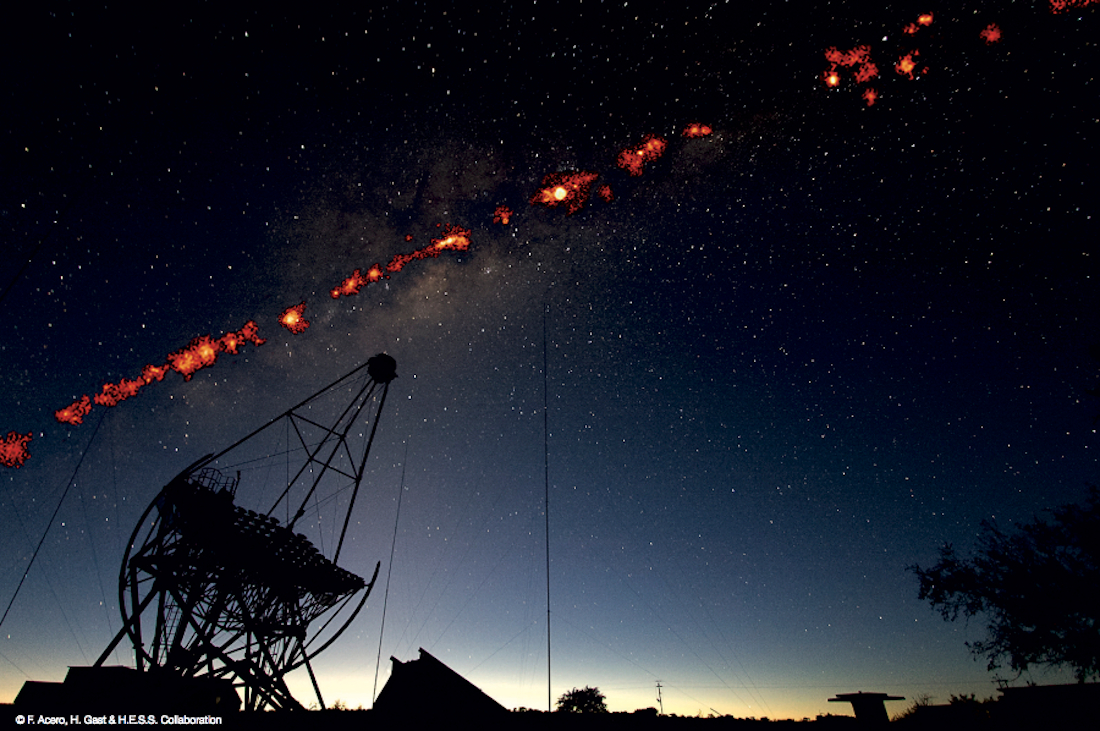
 Credit: F. Acero; H.E.S.S. Collaboration (Astronomy & Astrophysics 2018, vol. 612, p. 1)
Credit: F. Acero; H.E.S.S. Collaboration (Astronomy & Astrophysics 2018, vol. 612, p. 1)
Over African Skies
Some sources in the Milky Way are so powerful that they produce extremely high energy radiation. This radiation, traveling from the depths of the cosmos to earth, can interact with the earth's atmosphere, producing high-energy particles that move faster than light in the atmosphere. These ultra-fast moving particles produce their own peculiar blue glow, and this secondary radiation can be detected by sensitive telescopes on the ground. Since early 2003, the High Energy Stereoscopic System (otherwise known as H.E.S.S. - an acronym chosen in honor of Victor Hess, the discoverer of cosmic rays) has been studying this secondary radiation produced by some of the highest energy sources in the Universe. The H.E.S.S. observatory is an array of optical telescopes located in the Khomas Highland of Namibia, and operated by an international collaboration of about 40 scientific institutions in Africa, Europe, Australia and Japan. The image above shows a deep view of the very high energy gamma-ray emission (in orange) from sources in the plane of the Milky Way, obtained over 15 years of observing. The H.E.S.S. Galactic Plane Survey image is superimposed on an optical image of the Namibian sky, with one of the H.E.S.S. telescopes in the foreground. This deep H.E.S.S. survey reveals never-before-understood information about the shocking nature of the high-energy radiation produced by neutron stars, black holes, stars, and other powerful, destructive sources which lurk within the disk of our home galaxy.
Published: October 4, 2021
<
HEA Dictionary ● Archive
● Search HEAPOW
● Other Languages
● HEAPOW on Facebook
● Download all Images
● Education ● HEAD
>

Each week the HEASARC
brings you new, exciting and beautiful images from X-ray and Gamma ray
astronomy. Check back each week and be sure to check out the HEAPOW archive!
Page Author: Dr. Michael F. Corcoran
Last modified Tuesday, 27-Feb-2024 10:06:41 EST


